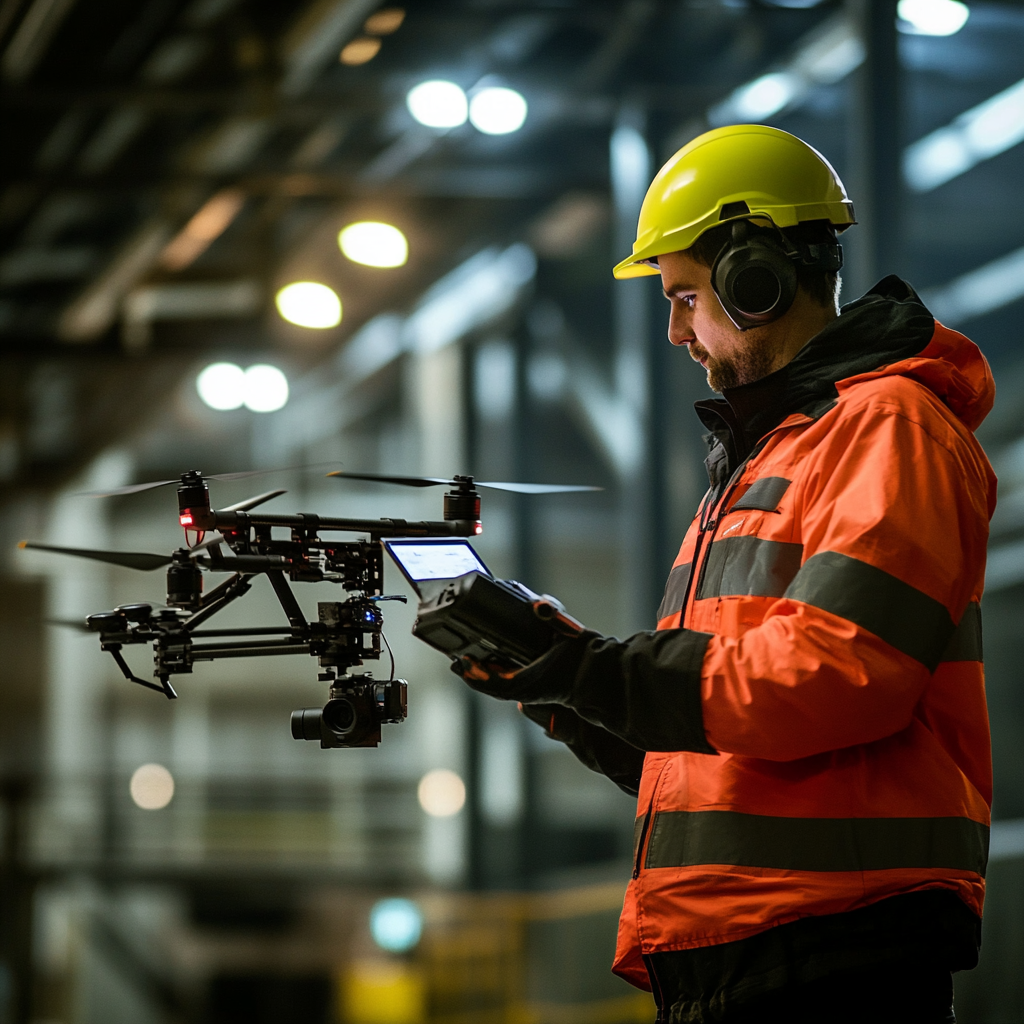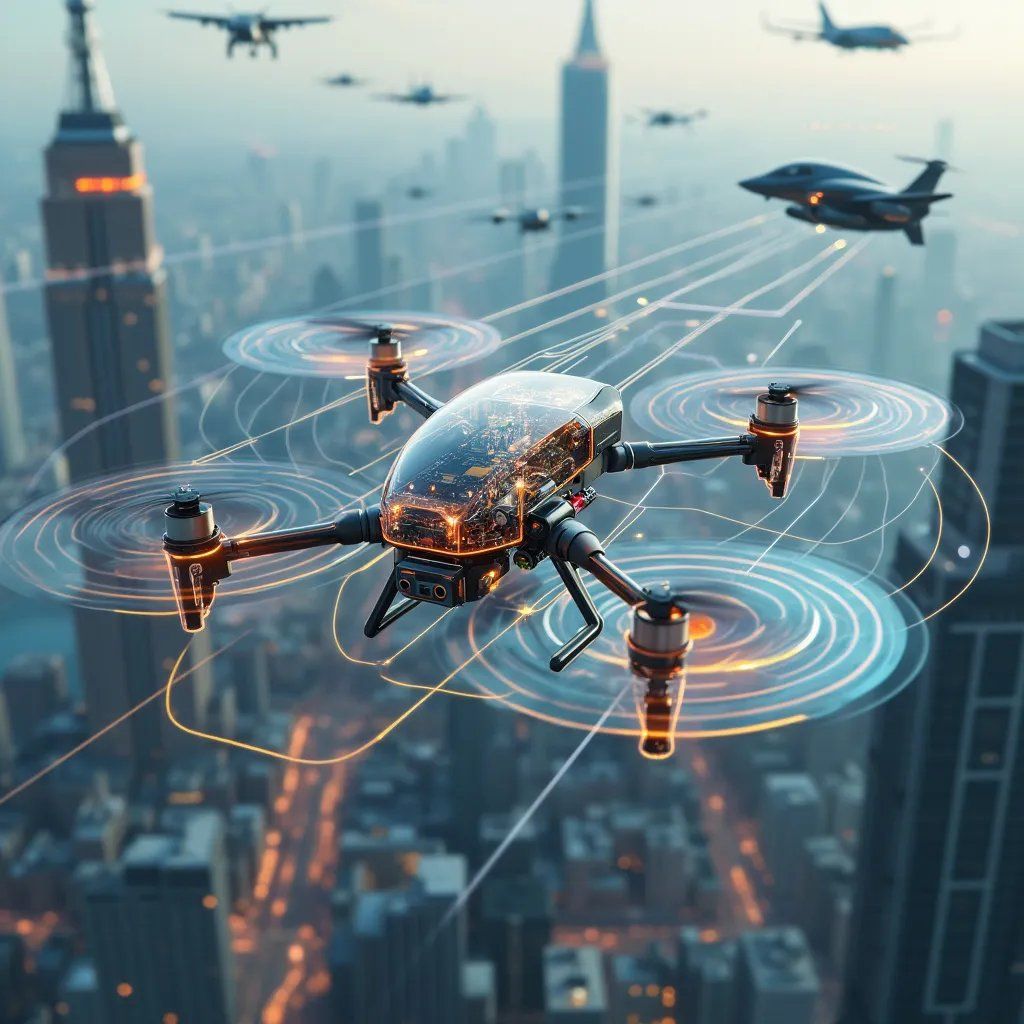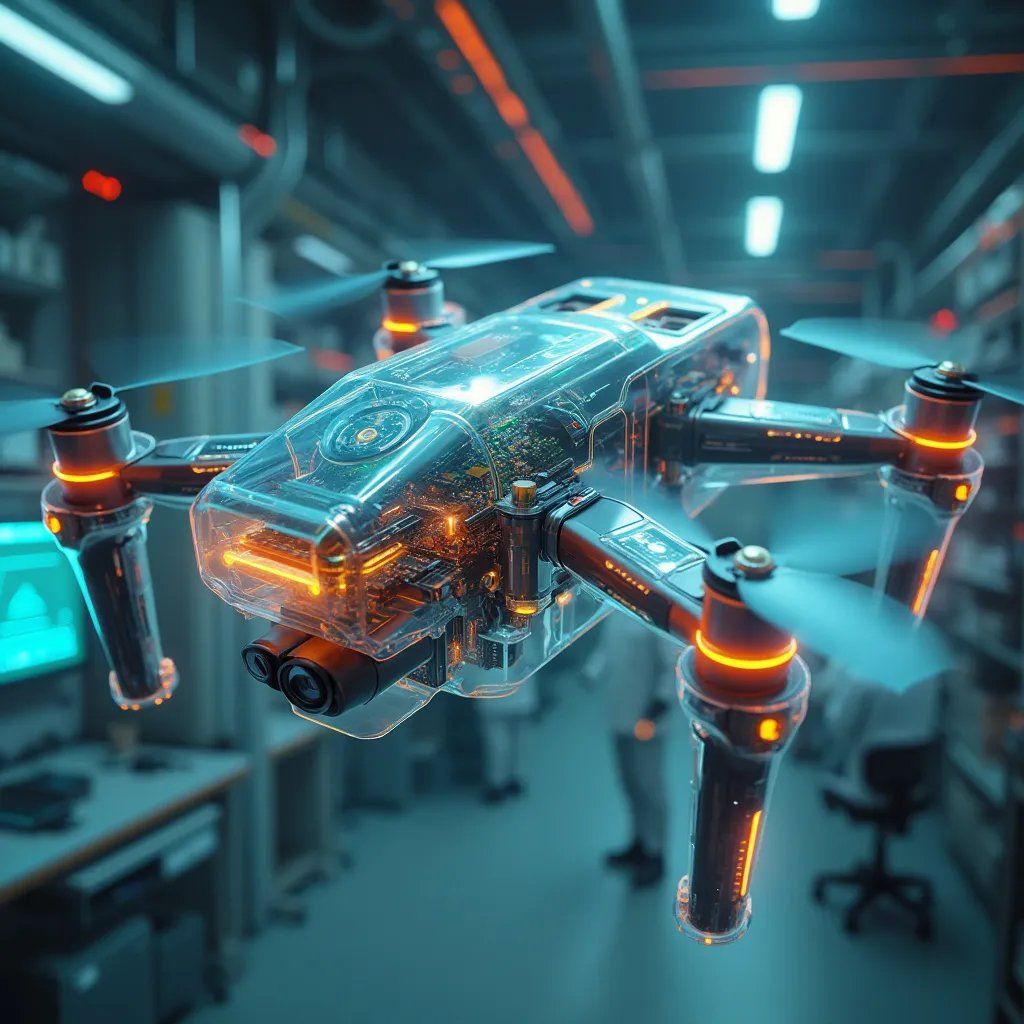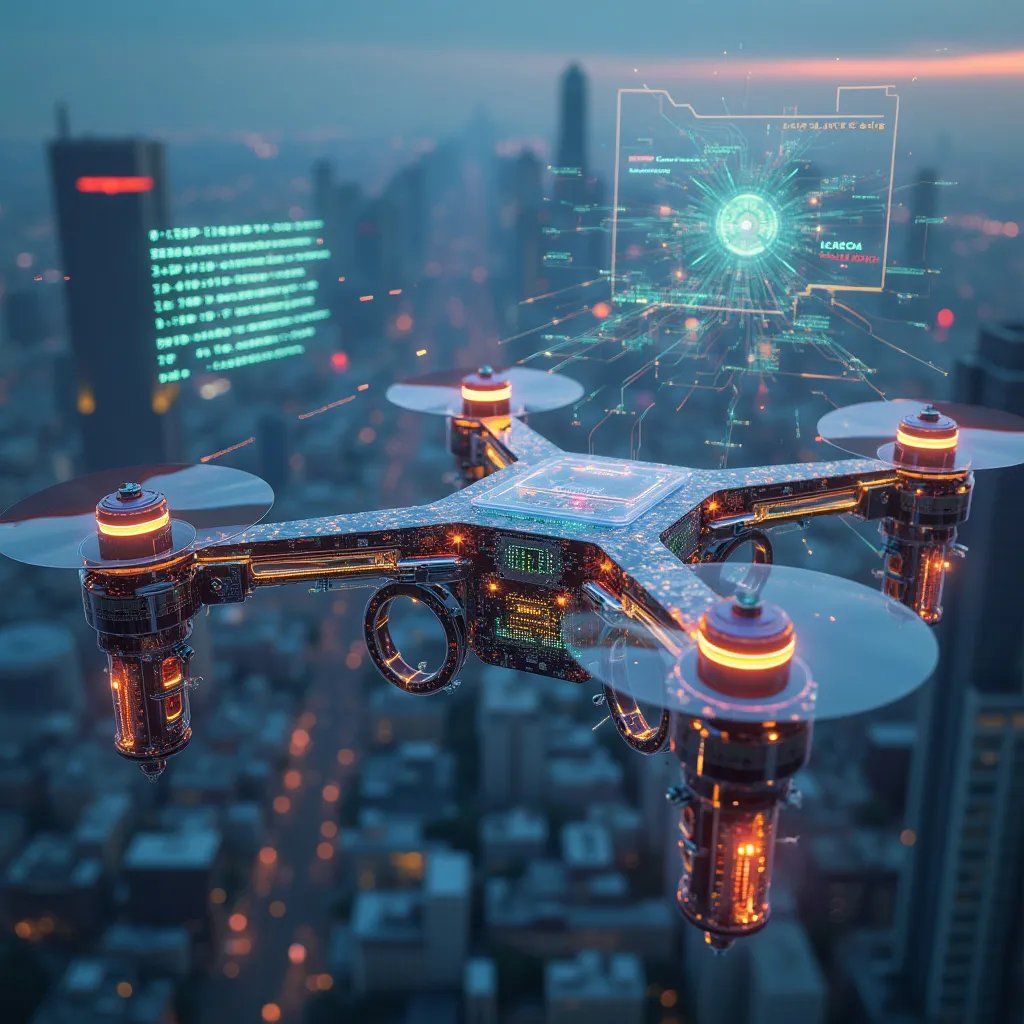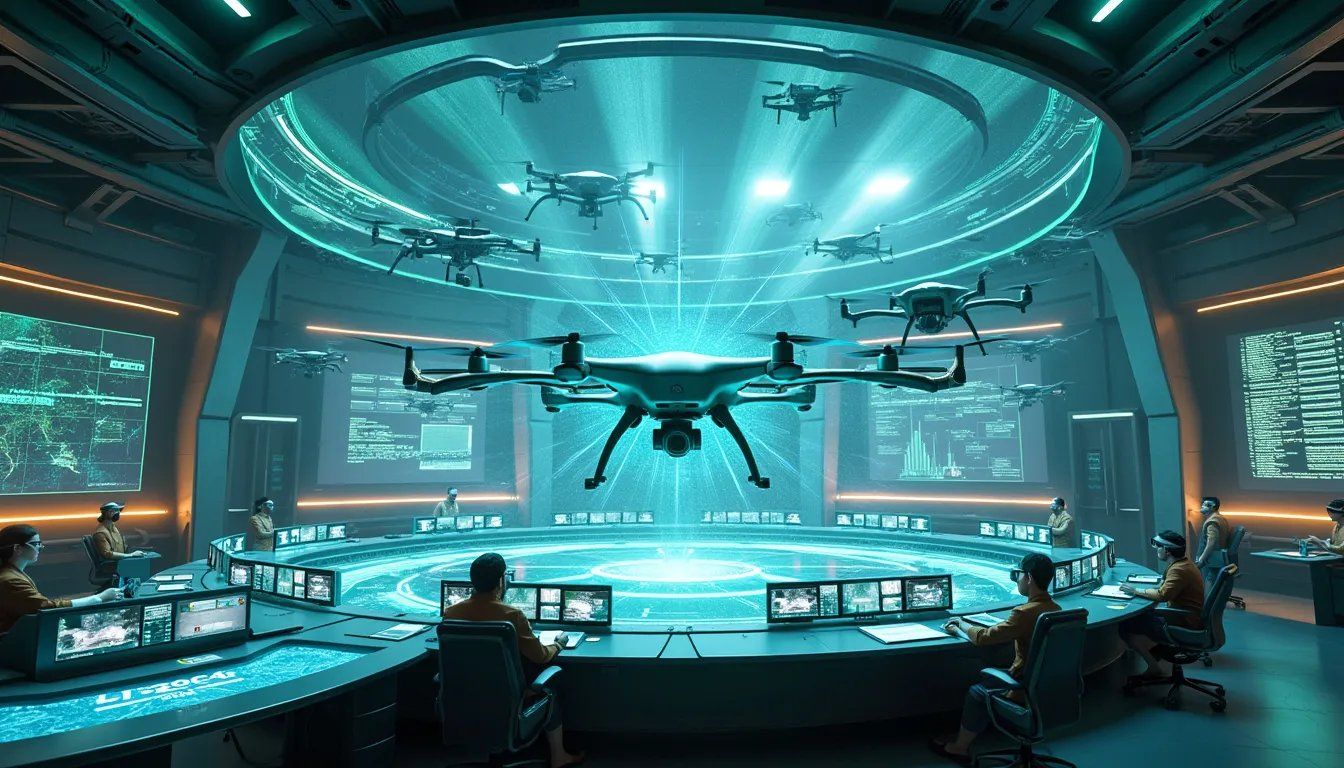Introduction
As the drone industry rapidly advances towards fully autonomous operations, the need for sophisticated Identification Friend or Foe (IFF) systems has become more crucial than ever. At Decent Cybersecurity, our DroneCrypt IFF system is at the forefront of this technological revolution, offering cutting-edge solutions tailored for the unique challenges of autonomous drone operations. This article explores the intricate world of IFF solutions for autonomous drones, highlighting the technologies, challenges, and innovations shaping this critical field.
The Rise of Autonomous Drone Operations
Autonomous drones are set to transform various sectors, from logistics and agriculture to search and rescue operations. However, this autonomy brings new challenges in identification and security:
- Lack of Human Intervention: Autonomous drones must make split-second decisions without direct human control.
- Complex Operational Environments: These drones often operate in dynamic, unpredictable scenarios.
- Increased Security Risks: Autonomous systems can be vulnerable to sophisticated cyber attacks and spoofing attempts.
- Regulatory Compliance: Autonomous drones must adhere to evolving air traffic management regulations.
DroneCrypt IFF: Tailored for Autonomy
At Decent Cybersecurity, our DroneCrypt IFF system has been specifically enhanced to meet the demands of autonomous drone operations. Key features include:
1. AI-Driven Decision Making
- Real-time Threat Assessment: Utilizes machine learning algorithms to evaluate potential threats and make autonomous identification decisions.
- Adaptive Security Protocols: Dynamically adjusts security measures based on the operational context and perceived threat level.
2. Quantum-Resistant Cryptography
- Future-Proof Security: Implements post-quantum algorithms like CRYSTALS-Kyber and Dilithium to protect against potential quantum computing threats.
- Lightweight Implementation: Optimized for the limited computational resources of autonomous drones.
3. Blockchain-Based Authentication
- Decentralized Trust: Leverages Hyperledger Fabric to create a tamper-proof, distributed ledger of drone identities and interactions.
- Smart Contract Integration: Automates compliance checks and access control for autonomous operations.
4. Multi-Modal Sensor Fusion
- Comprehensive Situational Awareness: Integrates data from various sensors (RF, visual, acoustic) for robust identification in diverse environments.
- Anomaly Detection: Uses an ensemble of Isolation Forest and LSTM neural networks to identify unusual patterns in drone behavior or communications.
Key Challenges in Autonomous Drone IFF
Implementing IFF solutions for autonomous drones presents several unique challenges:
1. Real-Time Processing Constraints
Challenge: Autonomous drones require instantaneous IFF decisions to operate safely in dynamic environments.
Solution: DroneCrypt IFF achieves processing times of less than 10ms per transaction through optimized algorithms and hardware acceleration techniques.
2. Spoofing and Cyber Attacks
Challenge: Autonomous systems are particularly vulnerable to sophisticated spoofing attempts and cyber attacks.
Solution: Our multi-layered security approach combines AI-driven anomaly detection, quantum-resistant cryptography, and blockchain-based verification to create a robust defense against various attack vectors.
3. Interoperability and Standardization
Challenge: Autonomous drones must operate seamlessly within existing air traffic management systems and adhere to evolving standards.
Solution: DroneCrypt IFF is designed with flexibility in mind, supporting multiple identification protocols and easily adapting to new regulatory requirements.
4. Energy Efficiency
Challenge: Advanced IFF systems can significantly impact the limited power budget of autonomous drones.
Solution: Our system is optimized for low power consumption, utilizing efficient cryptographic implementations and adaptive processing based on threat levels.
Innovative Approaches in Autonomous Drone IFF
1. Swarm Intelligence for Collective IFF
For scenarios involving multiple autonomous drones, DroneCrypt IFF implements swarm-based identification strategies:
- Collaborative Threat Assessment: Drones share identification data and collectively evaluate potential threats.
- Distributed Computing: Leverages the combined processing power of the swarm for more sophisticated IFF operations.
Research by Zhang et al. (2023) has shown that swarm-based IFF approaches can improve identification accuracy by up to 25% in complex environments compared to individual drone systems [1].
2. Context-Aware Identification Protocols
DroneCrypt IFF employs advanced context-awareness to optimize IFF operations:
- Geospatial Adaptation: Adjusts identification protocols based on the drone’s location (e.g., urban areas vs. remote regions).
- Mission-Specific Modes: Tailors IFF behavior to specific types of autonomous missions (e.g., delivery vs. surveillance).
3. Self-Healing Security Mechanisms
To enhance resilience in autonomous operations, our system incorporates self-healing capabilities:
- Autonomous Threat Mitigation: Ability to isolate compromised components and reconfigure security protocols in real-time.
- Adaptive Encryption: Dynamically changes encryption schemes if a security breach is detected.
4. Cognitive Radio Techniques for Robust Communication
DroneCrypt IFF leverages cognitive radio principles to ensure reliable IFF communications:
- Dynamic Spectrum Access: Intelligently selects optimal frequencies for IFF transmissions based on environmental conditions.
- Interference Mitigation: Employs advanced signal processing techniques to maintain clear communications in noisy environments.
Case Study: Autonomous Drone Swarm in Urban Environment
To illustrate the effectiveness of advanced IFF solutions in autonomous drone operations, consider this recent deployment of DroneCrypt IFF:
A major logistics company implemented an autonomous drone swarm for last-mile delivery in a densely populated urban area. The swarm consisted of 50 drones operating simultaneously in a 10 square kilometer zone.
Challenges:
- High-density urban environment with significant RF interference
- Necessity for real-time coordination with manned aircraft and other drone operators
- Strict regulatory requirements for autonomous drone operations
DroneCrypt IFF Solution:
- Implemented swarm-based collaborative IFF, allowing drones to share identification data and collectively assess potential threats
- Utilized context-aware protocols that adapted to different zones within the urban environment
- Employed cognitive radio techniques to maintain clear IFF communications despite urban RF challenges
Results:
- 99.99% successful identification rate over a three-month operational period
- Zero incidents of misidentification or security breaches
- 30% reduction in IFF-related communication overhead compared to traditional systems
- Full compliance with local and national regulations for autonomous drone operations
This case study demonstrates the robust capabilities of DroneCrypt IFF in managing complex, real-world autonomous drone scenarios.
Future Directions in Autonomous Drone IFF
As autonomous drone technology continues to evolve, several exciting developments are on the horizon:
1. Quantum Sensing for Enhanced IFF
Exploring quantum sensing technologies to develop ultra-sensitive IFF systems capable of detecting and identifying drones at greater distances and with higher accuracy.
2. Neuromorphic Computing for IFF
Investigating brain-inspired computing architectures to create more efficient, adaptive IFF systems that can learn and evolve in real-time.
3. AI-Driven Predictive IFF
Developing advanced AI models that can predict potential identification challenges or security threats before they occur, enabling proactive measures in autonomous drone operations.
4. Biometric Drone Identification
Exploring the use of unique physical characteristics of drones (e.g., minute variations in rotor sounds or flight patterns) as an additional layer of identification.
Regulatory Landscape and Compliance
As autonomous drone operations become more prevalent, regulatory frameworks are evolving to ensure safety and security:
- EASA U-Space Regulation: The European Union Aviation Safety Agency has established a framework for the safe integration of drones into airspace, including specific provisions for autonomous operations [2].
- FAA Remote ID Rule: The Federal Aviation Administration’s Remote ID regulations, while primarily focused on human-operated drones, also have implications for autonomous systems [3].
- ISO/IEC Standards: The International Organization for Standardization is developing standards specifically for autonomous drone operations, including IFF requirements [4].
DroneCrypt IFF is designed with these evolving regulations in mind, ensuring that autonomous drone operations remain compliant with current and future standards.
Conclusion: Pioneering the Future of Autonomous Drone Security
As we stand on the brink of a new era in drone technology, the importance of robust, intelligent IFF solutions for autonomous operations cannot be overstated. At Decent Cybersecurity, our DroneCrypt IFF system represents the cutting edge of this critical technology, combining AI-driven decision making, quantum-resistant cryptography, and innovative approaches like swarm intelligence to ensure the security and efficiency of autonomous drone operations.
The challenges in this field are significant, but so are the opportunities for innovation. As we continue to develop and refine our IFF solutions, we’re not just enhancing drone security – we’re laying the groundwork for a future where autonomous drones can operate safely and efficiently in complex, real-world environments.
Looking ahead, the continued advancement of IFF technologies for autonomous drones promises to unlock new possibilities across various sectors, from revolutionizing urban logistics to enhancing disaster response capabilities. By staying at the forefront of this technological frontier, we’re helping to shape a future where the skies are safely and productively shared by manned and unmanned aircraft alike.
At Decent Cybersecurity, we’re committed to driving this innovation forward, ensuring that our DroneCrypt IFF system remains at the vanguard of autonomous drone security. As we continue to push the boundaries of what’s possible in IFF technology, we remain dedicated to creating a safer, more efficient, and more connected world through the power of secure autonomous drone operations.
References
[1] Zhang, L., Wang, Y., & Sun, X. (2023). “Swarm-Based IFF Strategies for Autonomous Drone Operations.” IEEE Transactions on Aerospace and Electronic Systems, 59(4), 2890-2905.
[2] European Union Aviation Safety Agency. (2023). “Easy Access Rules for Unmanned Aircraft Systems.” Regulation (EU) 2019/947 and Regulation (EU) 2019/945.
[3] Federal Aviation Administration. (2023). “Remote Identification of Unmanned Aircraft.” 14 CFR Part 89.
[4] ISO/IEC JTC 1/SC 6. (2023). “Information technology — Unmanned aircraft systems — Part 4: Identification and tracking.” ISO/IEC 21384-4:2023.
[5] Liu, J., Chen, H., & Yang, L. (2023). “Quantum-Resistant Cryptography for Autonomous Drone Identification.” Journal of Cryptographic Engineering, 13(2), 156-171.
